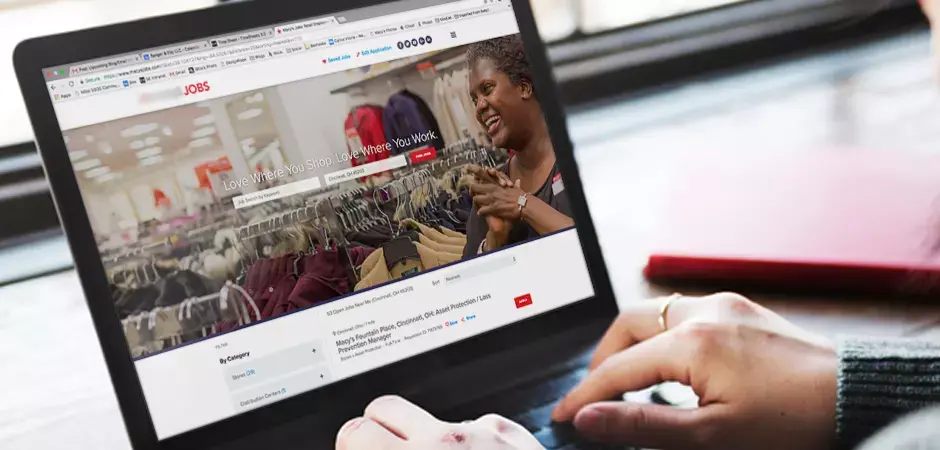Career sites have evolved. Job applicants expect career websites to include more than just job descriptions and online application portals. Today’s applicants expect a mobile-friendly, accessible experience. Our recruitment marketing experts have compiled a features checklist to help you evaluate your current careers website.

The goal of every careers website is to attract, inform and attain talent, while providing a user-friendly, informative application process. Are you including all the information and site features that your ideal job applicants need to successfully complete your applications? Use our checklist below to evaluate your current careers site.
Career website checklist
Make it accessible
Prioritizing accessibility in your design ensures all prospects can access and complete your application process.
A straightforward, accessible careers website should include:
- Easy-to-use interface. Can candidates easily search and apply for jobs? Conduct a user-experience survey and audit to gather insights about the accessibility of the site.
- Straightforward job descriptions. Job descriptions are often overwhelming and inundated with information that isn’t applicable to the prospect. Consider shortening your sentences, breaking up paragraphs and creating bulleted lists to share concise job description details.
- User-friendly search filters and categories. Job categories and search filters should be intuitive. If a user has to spend too much time guessing while trying to filter job search results, they may get frustrated and leave.
Make it mobile friendly
In 2021, 67% of job applications were completed on mobile devices, according to a report by Appcast. That number is even larger in 2023.
Why do “mobile job seekers, on average, successfully complete 53% fewer applications and take 80% longer to complete each application?” Because they’re not user-friendly.
Mobile-friendly careers websites include:
- Mobile friendly design. Candidates today are applying on their phones. If your careers site isn’t designed with mobile in mind, you could lose out on top talent.
- Mobile job search functionality. Beyond mobile-friendly design, your careers site should be fully-functional for mobile users. For example, many applicant tracking systems do not allow for users to access the search function. This is a big miss for mobile job seekers.
- Mobile job application functionality. Having a mobile job application goes hand-in-hand with mobile search functionality. If users can search for a job on their mobile device but have to complete the application on a desktop computer, you could lose those candidates in the transition.
Make it individualized
The easier it is for job applicants to customize their search based on their interests, expertise and/or location, the more likely they will complete the application process.
Intentional careers websites include:
- Location-based search features. Enabling job seekers to search for open positions in one geographic area adds to an improved candidate experience. Remember, the fewer taps and clicks a user has to make, the more likely they are to complete the application process.
- Custom job notification alerts. Don’t lose out on these job seekers just because their dream job isn’t available at the time of their search. Setting up notifications will help keep them engaged until the perfect position becomes available.
Make it authentic
The more authentically your careers site represents company culture, the more likely that you are going to connect with qualified leads. This process is fairly streamlined for companies already have an established employer brand. Authentic, culture-focused careers websites include:
- Company culture details. Candidates are interested in learning who they will be working with, what the daily work environment is like and how their values are aligned with your company values.
- Benefits information (tangible and intangible). In addition to financial benefits, be sure to include benefits like professional development opportunities, mentorship programs, flexible vacation days and even work-from-home options.
- Authentic images. Stock images are easy to spot and give an inaccurate, often cold, representation of your company. Adding a variety of images and candid shots of your team will build trust with job applicants.
- Video. Job seekers are looking for anything that will give them a sneak-peak inside your company so they can picture themselves as a part of your team. Incorporating video into your careers site will enable applicants to get a real sense of your company.
- Growth opportunities. Including a career path for certain positions allows applicants to see the opportunities for growth within your organization.
- Social integration. Many job seekers spend time researching company culture by visiting their social media accounts. While integrations with social networks (LinkedIn, Facebook, etc.) may make it easier for applicants to reach your careers site and complete the application process, your social presence should also represent your culture.
- Seamless experience. Does your careers site match the creative and overall feel of your primary website? It can be disjointing when a user feels pulled away from the experience to complete an application or form. Consider working with an agency like ours to develop an overlay to make your application website tracker appear to be an integrated part of your primary company website.
How does your careers site stack up?
How many of these features does your current careers site include? Take a look at some of our work with 21st Century Fox and IHG to see how we’ve helped them create effective careers sites. Then, let’s talk about how we can improve the candidate experience of your company’s career website.